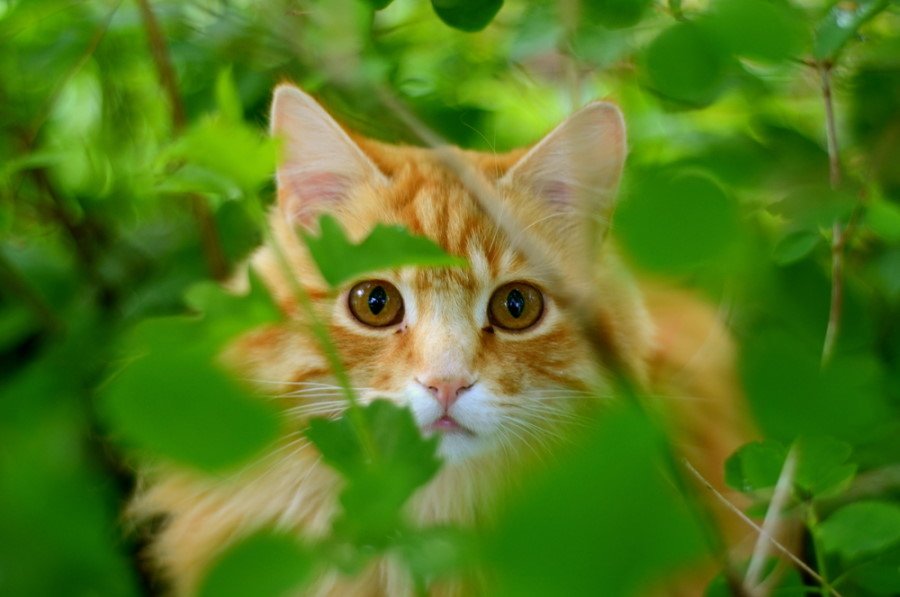Springtime always puts gardeners everywhere into the growing spirit. When considering planting that spring garden outside, finding cat-friendly outdoor garden plants is a must!
Many cats won’t remain exclusively indoors, and all that lush vegetation will be like catnip to Fluffy. Some plants that your feline could be attracted to and even might chew on could cause health concerns.
Additionally, remember that cats love to nibble on grass and plants. Ensure when checking for your planting options that will not cause concerns. Plants in your new garden can action provide hours of play, hiding, and engagement for your feline, as well as a satisfying hobby for yourself. Here is a general list of items for consideration when planting a feline-safe garden.
Table of Contents
Cat Grass & Nip
Catnip and cat grass are amazing additions to your garden and a surefire treat for your fur baby. Catnip is a top choice that attracts cats as a relative of the mint plant. Cats consume the leaves of this vegetation, and it is said to produce a euphoric state in some felines.
Additionally, the leaves can be used for certain teas. The other aptly named cat grass can be planted indoors or out. This plant makes a great additive to your garden as cats love playing and chewing on it. Having this around may deter the cat from other plants, but at the very least is a safe alternative for your pets in the outdoor garden.
Herbs Galore
Many of the most popular herbs such as dill, basil, cilantro, and thyme are amazing additions to your garden. In addition to smelling amazing, these are some of the best flavor additives for use in cooking and garnishments.
The bonus being all are safe for your feline. Rosemary and sage, which have medicinal and cuisine benefits, can be added to the growing list of feline-safe herbs for gardening.
Cucurbit Family of Vegetables
Vining vegetables of the cucurbit family are great options for planting in your garden. The hanging squash, pumpkins, and cucumbers can provide amazing hiding places for your curious feline while they grow.
Also, they are all safe if ingested by your cat, and quite honestly, cats love climbing, jumping, and playing with the fruit.
Beans
Except for castor beans, most beans are safe for your cat. Additionally, you can arrange them in rows, circles, and other patterns to create amazing hiding areas for your pet.
The low-hanging vegetable serves as a swatting toy, and this multi-functional vegetable is a win-win for your outdoor garden space.
AVOID Bulb Plants
Bulb plants are extremely dangerous for cats. The bulbs have the biggest concentration of dangerous chemicals and should be avoided in areas that your feline can access. This will include tulips, hyacinths, and any other plant with a bulb that should not be within your feline’s reach.
Sunflowers
These happy, pretty plants make amazing additions to any garden. Great for giving to friends, decorating your home, and safe for your feline companion.
Since these are super tall plants when they grow to full height, the blossoms are not easily accessed by your feline in most cases.
Use Scents to Border
If you decide to proceed with items that might need to be kept away from felines, use aroma to help provide a natural border. Plectranthus caninus known as the scaredy cat plant is one that cats tend to avoid but is not harmful to other plants when planted nearby.
Even wonderful smells for the human noise like lavender, rosemary, or curry plant can be too fragrant for cats and keep them at bay. This natural repellent can be a good alternative for the segregation of cat safe and those areas your feline shouldn’t enter. Remember, even with scents; not all cats will react the same, so you judge which scents might work best for your use.
Organic is Best
It should be understood that not just what you plant but what you use to treat, maintain and fertilize your garden is critical to dissect when your cat’s safety is at stake.
Organic gardening without harsh chemicals, pest repellents, and other compounds is the best way to proceed when possible to minimize concerns for your feline. Keeping them inside, or possibly the garden in lockable spaces such as greenhouses or other options should you choose to proceed with questionable plants and chemicals is critical.
Your green thumb and fur baby absolutely can co-exist. When planting your outside garden, there will be a few additional considerations besides your favorite vegetables and herbs to consider.
Remember to ensure that the plants are safe for your pet, but also, think about plants that your cat might enjoy, like Catnip.
Plants can present amazing toys, hiding spots, and hours of enjoyment for your feline companion, and after washing, great food for your table. A few quick checks as you plan your garden to ensure your cat’s safety will see you with fresh produce and happy, healthy pets for years to come.

Jonathon Hyjek is an entrepreneur and cat-lover. He is married to Joy and they share their home with their 2 feline-friends, Franklin & Ollie. Jonathon is a self-admitted “Crazy Cat Guy”. He started this website because of his love for his own cats and their well-being.

